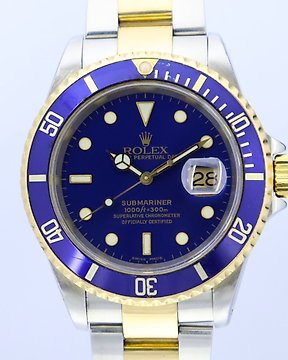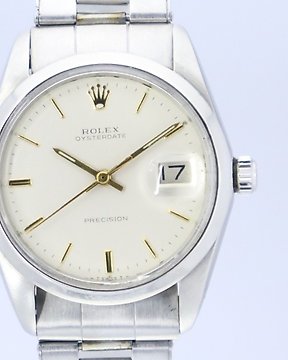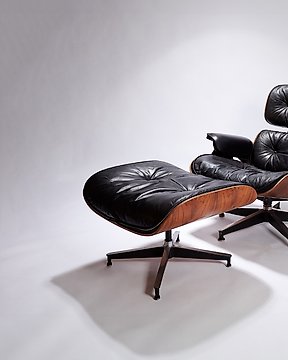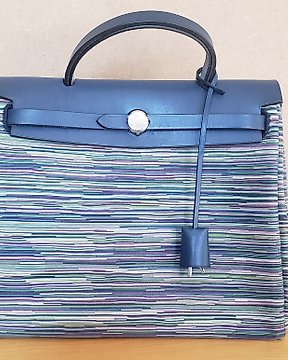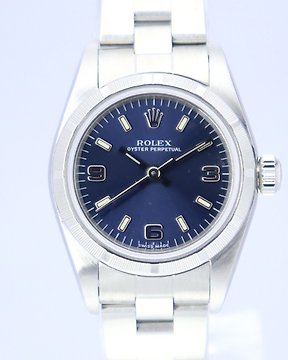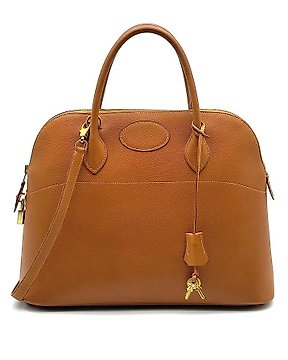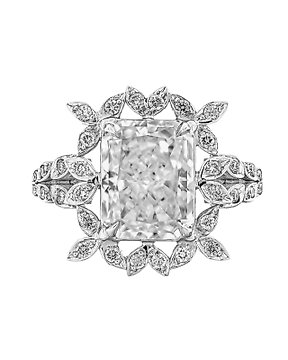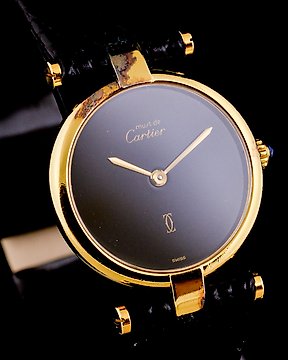Great ☺️👍👍👍
Προβολή μετάφρασηςSogdian - Silkroad πολιτισμός Ασήμι (92,73 %) Bear Head Διακοσμητικό Απλικέ - με δοκιμή XRF - 40 mm
Αρ. 85578077



A silver bear head ornamental ending from the ancient Sogdian culture, second millennium AD or older.
In good condition. It has been cleaned partly, but the nice antique green patina is preserved. It was repaired on the body in old time.
Purchased mid 90's in London by Dr. Zelnik on the local art market.
Sogdians and Sogdian Culture :
About the Sogdian Culture :
Sogdian culture refers to the ancient culture of the Sogdians, Iranian people who inhabited the region of Sogdiana, located in present-day Uzbekistan, Tajikistan, and parts of Kazakhstan and Turkmenistan. The Sogdians were renowned traders, diplomats, and artisans along the ancient Silk Road, playing a significant role in the cultural and economic exchanges between East and West.
Their culture was diverse and multifaceted:
Trade and Commerce: Sogdians were known for their expertise in trade and commerce. They established extensive trade networks that connected China, Central Asia, the Middle East, and Europe. Their strategic location along the Silk Road contributed significantly to their wealth and influence.
Language and Writing: The Sogdians had their own language, which was an Eastern Iranian language closely related to Persian. They had a script, which was an adaptation of the Aramaic script. Sogdian merchants used their language as a lingua franca in their trade interactions.
Art and Craftsmanship: Sogdian artisans were skilled in various crafts, including pottery, metalwork, and textiles. Their artistic expressions often incorporated elements from various cultures they encountered along the trade routes, resulting in a unique blend of styles.
Religion and Beliefs: Initially following Zoroastrianism, the Sogdians later adopted Buddhism and Manichaeism. They were known for their religious tolerance and the syncretic nature of their beliefs, which incorporated elements from various faiths.
Urban Centers: Sogdian cities, like Samarkand and Bukhara, were thriving urban centers along the Silk Road. These cities were hubs of cultural exchange, commerce, and learning.
Architecture: Sogdian architecture often reflected influences from different cultures, displaying a mix of Persian, Greek, and Central Asian styles.
The Sogdians played a crucial role as intermediaries, facilitating the exchange of goods, ideas, and cultures between the East and West during ancient times.
see also the link : https://sogdians.si.edu/introduction/
Important information :
The seller guarantees that he is entitled to ship this lot.
Due to the complicated Cultural Laws we will not be able to ship this item outside of the EU nor to the United States.
Provenance :
This item comes from the collection of Dr. Zelnik, resulting from more than 50 years of collecting.
Former diplomat, Asian Arts collector, Researcher.
Publications :
More than 20 essays on Southeast-Asian politics and economy, presentations on international conferences.
Co-author of 10 albums and books on Southeast Asian Art.
A silver bear head ornamental ending from the ancient Sogdian culture, second millennium AD or older.
In good condition. It has been cleaned partly, but the nice antique green patina is preserved. It was repaired on the body in old time.
Purchased mid 90's in London by Dr. Zelnik on the local art market.
Sogdians and Sogdian Culture :
About the Sogdian Culture :
Sogdian culture refers to the ancient culture of the Sogdians, Iranian people who inhabited the region of Sogdiana, located in present-day Uzbekistan, Tajikistan, and parts of Kazakhstan and Turkmenistan. The Sogdians were renowned traders, diplomats, and artisans along the ancient Silk Road, playing a significant role in the cultural and economic exchanges between East and West.
Their culture was diverse and multifaceted:
Trade and Commerce: Sogdians were known for their expertise in trade and commerce. They established extensive trade networks that connected China, Central Asia, the Middle East, and Europe. Their strategic location along the Silk Road contributed significantly to their wealth and influence.
Language and Writing: The Sogdians had their own language, which was an Eastern Iranian language closely related to Persian. They had a script, which was an adaptation of the Aramaic script. Sogdian merchants used their language as a lingua franca in their trade interactions.
Art and Craftsmanship: Sogdian artisans were skilled in various crafts, including pottery, metalwork, and textiles. Their artistic expressions often incorporated elements from various cultures they encountered along the trade routes, resulting in a unique blend of styles.
Religion and Beliefs: Initially following Zoroastrianism, the Sogdians later adopted Buddhism and Manichaeism. They were known for their religious tolerance and the syncretic nature of their beliefs, which incorporated elements from various faiths.
Urban Centers: Sogdian cities, like Samarkand and Bukhara, were thriving urban centers along the Silk Road. These cities were hubs of cultural exchange, commerce, and learning.
Architecture: Sogdian architecture often reflected influences from different cultures, displaying a mix of Persian, Greek, and Central Asian styles.
The Sogdians played a crucial role as intermediaries, facilitating the exchange of goods, ideas, and cultures between the East and West during ancient times.
see also the link : https://sogdians.si.edu/introduction/
Important information :
The seller guarantees that he is entitled to ship this lot.
Due to the complicated Cultural Laws we will not be able to ship this item outside of the EU nor to the United States.
Provenance :
This item comes from the collection of Dr. Zelnik, resulting from more than 50 years of collecting.
Former diplomat, Asian Arts collector, Researcher.
Publications :
More than 20 essays on Southeast-Asian politics and economy, presentations on international conferences.
Co-author of 10 albums and books on Southeast Asian Art.
- 486
- 4
- 6
Thank you for this nice bead!
Προβολή μετάφρασηςThank you for this nice bead!
Προβολή μετάφρασηςThank you for this nice bead!
Προβολή μετάφρασηςThank you for these very nice beads!
Προβολή μετάφρασηςThank you for these nice beads!
Προβολή μετάφρασηςThank you for this nice bead!
Προβολή μετάφρασηςThank you for this nice bead!
Προβολή μετάφρασηςThank you for these nice beads!
Προβολή μετάφρασηςThank you for these nice beads!
Προβολή μετάφρασηςThank you for this very nice deity bead!
Προβολή μετάφρασηςThank you for this nice beads!
Προβολή μετάφρασηςThank you for this nice bead!
Προβολή μετάφρασηςThank you for this wonderful Buddha!
Προβολή μετάφρασηςThank you for this wonderful Buddha!
Προβολή μετάφρασηςThank you for this very nice tiger!
Προβολή μετάφρασηςThank you for this very nice bead!
Προβολή μετάφρασηςThank you for this very nice fish!
Προβολή μετάφρασηςThank you for this very nice deity!
Προβολή μετάφρασηςThank you for this very nice bead!
Προβολή μετάφρασηςThank you for these very nice beads!
Προβολή μετάφρασηςThank you for this very nice necklace!
Προβολή μετάφρασηςThank you for this very nice necklace!
Προβολή μετάφρασηςThank you for this very nice necklace!
Προβολή μετάφρασηςThank you for this very nice necklace!
Προβολή μετάφρασηςΑποποίηση ευθυνών
Ο πωλητής εγγυάται και μπορεί να αποδείξει ότι το αντικείμενο αποκτήθηκε νόμιμα. Ο πωλητής ενημερώθηκε από την Catawiki ότι έπρεπε να παράσχει τα δικαιολογητικά που απαιτούνται από τους νόμους και τους κανονισμούς στη χώρα διαμονής τους. Ο πωλητής εγγυάται και δικαιούται να πουλήσει/εξάγει αυτό το αντικείμενο. Ο πωλητής θα παρέχει στον αγοραστή όλες τις πληροφορίες προέλευσης που είναι γνωστές για το αντικείμενο. Ο πωλητής διασφαλίζει ότι οποιεσδήποτε απαραίτητες άδειες έχουν ήδη κανονιστεί /θα κανονιστεί. Ο πωλητής θα ενημερώσει αμέσως τον αγοραστή για τυχόν καθυστερήσεις στην απόκτηση τέτοιων αδειών.
Ο πωλητής εγγυάται και μπορεί να αποδείξει ότι το αντικείμενο αποκτήθηκε νόμιμα. Ο πωλητής ενημερώθηκε από την Catawiki ότι έπρεπε να παράσχει τα δικαιολογητικά που απαιτούνται από τους νόμους και τους κανονισμούς στη χώρα διαμονής τους. Ο πωλητής εγγυάται και δικαιούται να πουλήσει/εξάγει αυτό το αντικείμενο. Ο πωλητής θα παρέχει στον αγοραστή όλες τις πληροφορίες προέλευσης που είναι γνωστές για το αντικείμενο. Ο πωλητής διασφαλίζει ότι οποιεσδήποτε απαραίτητες άδειες έχουν ήδη κανονιστεί /θα κανονιστεί. Ο πωλητής θα ενημερώσει αμέσως τον αγοραστή για τυχόν καθυστερήσεις στην απόκτηση τέτοιων αδειών.
